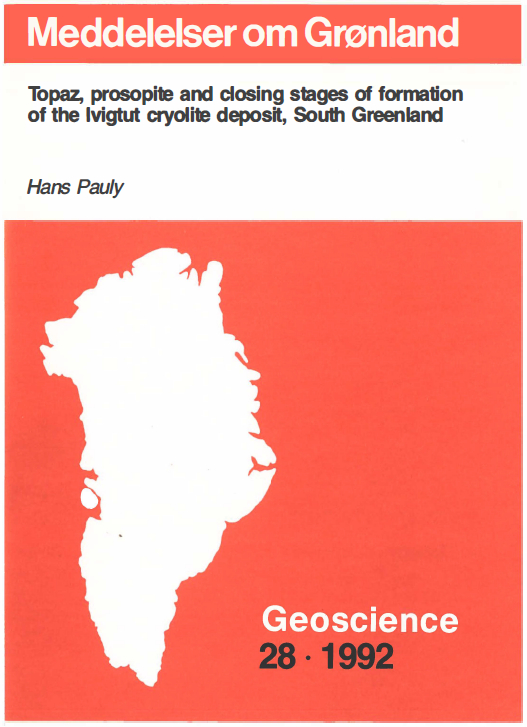Topaz, prosopite and closing stages of formation of the Ivigtut cryolite deposit, South Greenland
DOI:
https://doi.org/10.7146/moggeosci.v28i.140200Abstract
The evolution of the cryolite deposit at Ivigtut is divided into three stages. This work deals with the last two.
Siderite-cryolite (2½ 106 tons) followed by the body of pure, white cryolite accompanied by chiolite (1/2 106 tons) crystallized in Stage 1. An abrupt change in conditions led to Stage 2 in which the fluorite zone and the fluorite-cryolite (1 106 tons) formed. Finally, in Stage 3, fluids left from Stage 2 in fissures and cavities, dissolving cryolite gave rise to thomsenolite and other secondary minerals, (0.08 106 tons).
The cryptocrystalline topaz, emplaced in breccias and vein breccias with fluid izedem placement and penetrating cryolite along, unusual, cleavage planes, indicates that the transition from Stage 1 to Stage 2 was marked by extensive gas-driven explosions related to a Ca-F-rich residue. During these events colloform fluorite precipitated and formed with topaz the fluorite zone in the deeper part of the deposit; above, mechanically admixed cryolite gave rise to the fluorite-cryolite.
Concentrations of the minor elements Mg, K and Sr-Ba resulted in formation of web erite, spherulitic K-mica, jarlite and other Sr-Ba minerals in the last part of Stage 2. Chiolite broke down but cryolite remained stable during most of Stage 2.
Fluids left after Stage 2 dissolved cryolite and thomsenolite, ralstonite and other secondary Ca-fluorides formed. In an early phase of Stage 3 limited explosions precipitated prosopite in fluidized emplaced vein breccias similar to those carrying topaz. These events also led to the formation of the peculiar stalactitic or agate-like fluorite where the explosions hit cavities with solutions rich in Ca.

Downloads
Published
How to Cite
Issue
Section
License
Coypyright by the authors and the Commision for Scientific Research in Greenland / Danish Polar Center. No parts of the publications may be reproduced in any form without the written permission by the copyright owners.

